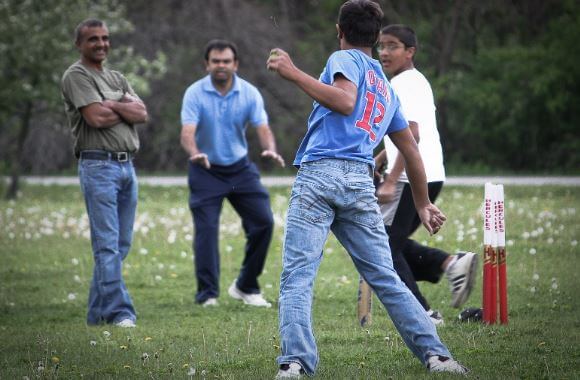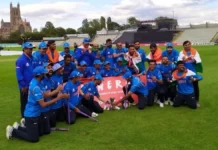Only 12 countries in the world have “Test status” in cricket. It means that all kinds of cricket can be played: test games, ODI, and T20. But that’s not all: they also have the right to vote in the International Cricket Council (ICC). The list of countries with such status is relatively small, and you will not find either the USA or Canada there. But, indeed, it includes England, Australia, and India, where cricket is a religion. And (you will be surprised, but this is a fact), Afghanistan’s athletes, proud and hardworking in this sport, are also on this list.
Moreover, if you decide to bet on Afghan athletes, it can be an excellent decision! Choosing a bookmaker, read about it. For example, this India24bet review contains a lot of information about one of the most respected local betting companies.
A bit of history
Although the country received the status only in 2018, cricket was first played there many years ago. It is officially documented that British troops played in Kabul in 1839 during the Anglo-Afghan wars of the 19th century. Members of the British troops took part in the competition. However, then the game brought by the British did not interest the Afghans. And the British did not leave a cricketing legacy behind.
In the 1990s, cricket became popular among Afghan refugees in Pakistan. Forced out of the war-torn country and pushed into poverty, Afghans have found solace in that exciting game. Often, sports equipment was made from improvised materials: balls were made from rags, and sticks were used as bats.
After the fall of the Taliban regime, the refugees returned to their homeland and continued to play cricket and helped its spread in Afghanistan.
In 1995, the Afghan Cricket Federation was formed. Despite this, the game was initially seen as foreign, and the players were often “accused” of being Pakistani immigrants. Furthermore, the rise to power of the Taliban, who initially opposed sports for fear that they would distract men from praying, certainly did not facilitate the situation. However, even under the Taliban regime, which ended up tolerating cricket and sometimes even encouraging it, the discipline gradually managed to expand its legitimacy in the country.
In less than a decade, a team born in dusty and inhuman refugee camps was able to qualify for the World Cup and win the hearts of Afghans. The first victory of the Afghan athletes inspired many of their compatriots. So the game began to attract more and more fans.
2010 was the year of the turning point with participation in the T20 World Championships in the Caribbean and the victory of the Asian Cricket Council Trophy Elite. Players were greeted like heroes at the airport and celebrated with impressive carousels on both occasions.
In Afghanistan’s climb to success, the role of the ICC has been fundamental, and it is worth pausing for a moment. The international federation has understood how much the global image of cricket could have benefited from the sporting successes of the new Asian national team. It has, therefore, never lacked technical and financial support, which proved decisive in professionalizing the movement.
Equally important has been 2015, the contribution to the leadership of the ACB of Shafiq Stanikzai, a former player and team manager. He has spent more time and energy than any other on the diffusion of the game throughout the country. Moreover, he was also trying to promote it outside of it.
Afghan cricket nowadays
Currently, the Afghan team participates in many international tournaments, twice participating in the Cricket World Cup (in 2015 and 2019). Competitions are also held within the country: more than 1 million Afghans play cricket, and about 300 are professional athletes. Afghanistan is the 10th in the ICC ranking (International Cricket Council, more or less the FIFA of cricket) and the 8th in the T20. And, from 2018, they can play Test matches.
Test matches range from two innings to unlimited overs lasting five days.
The Taliban are returned, or rather, they did not disappear anywhere. And there is no doubt that cricket is affected by it. But still, the country’s cricket team makes lots of Afghans happy. Women and men can’t be together in the stadiums, and there will be no women’s cricket team in the country, even though in 2010, there were such plans. Despite all this, Afghan athletes made significant progress in a short time. They train, achieve success, win and try to make their path! Isn’t it motivating?
“Sport is the only thing that can bring peace to Afghanistan,” says prominent Afghan cricketer Rashid Khan.
Nobody knows what will happen next, but from that story, someone can draw a conclusion: sport unites people, countries, and folks. Cricket has long been able to influence politics and common sense, and perhaps this will be the case?
Please, share your thoughts below.





